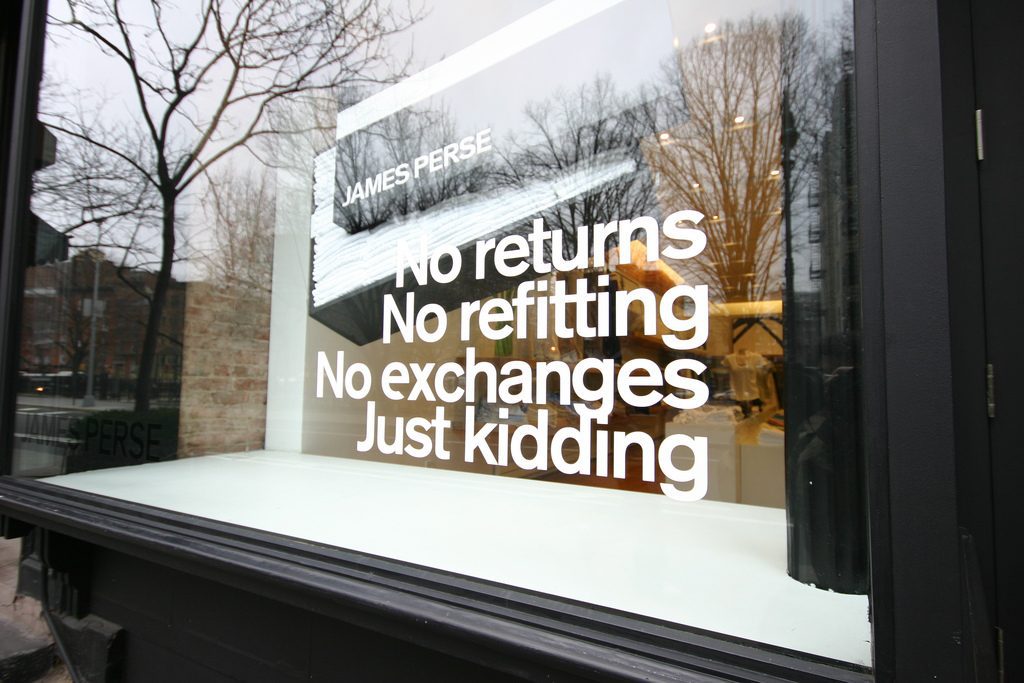As e-Commerce traffic continues to rise, consumers count on the ability to easily return purchases. According to a study by the NRF, total annual returns were expected to reach $260.5 billion, or 8% of total retail sales, in 2015. Disturbingly for retailers, $9.1 billion of those annual returns were projected to be fraudulent.
Retailers tempted to institute strict return policies in an attempt to choke off fraud, reduce the costs associated with legitimate returns, or both, run the risk of alienating customers. Like it or not, consumers judge retailers partially by their return policies. Research from The University of Texas at Dallas found that lenient return policies have a positive effect on consumer’s shopping decisions, leading to increased purchases.
In fact, more lenient policies may actually improve a retailer’s balance sheet. The research showed that longer allowable return windows actually lessen the likelihood of a return. Many large retailers offer extended deadlines for returns, if they have any at all. Nordstrom allows returns up to 90 days after the purchase, with or without a receipt. Bloomingdale’s accepts returns at any time, and doesn’t require an attached tag. Other lenient retailers include Macy’s, Zappos and Kohl’s.
Advertisement
One Policy Does Not Fit All
“In general, firms use return policies to increase purchases but don’t want to increase returns, which are costly. But all return policies are not the same,” said Ryan Freling, a UT Dallas doctoral candidate who conducted the University of Texas survey.
Another option is to align return policies with the requirements of different product categories. In an article for CNBC, Kevon Hills, VP of Research at StellaService, a customer analytics firm, said return policies often vary based on the item being sold. If a retailer sells seasonally specific items that can’t be sold at certain times of the year, the return policy can be stricter.
Retailers may need to adjust policies to protect their bottom lines. For example, special occasion dresses are an exception to liberal return policies at both Nordstrom and Bloomingdale’s. After customers made a habit of buying dresses, wearing them for their event and returning them after (a practice called “wardrobing”), both retailers stopped accepting returns on these specific items if the tags had been removed.
Even as some retailers offer hassle-free returns, others have yet to budge on their policies. For example, activewear retailer Lululemon has one of the strictest policies of major chains, offering only 14 days to return its apparel as new, with the tag intact. According to Business Insider, Lululemon customers have spoken up about the extremely strict policy and have even resorted to re-selling items they couldn’t return on eBay.
Tips To Avoid Return Fraud
It’s understandable that retailers want to push stricter return policies as a means to avoid fraud. The 2015 holiday season projected approximately $70 billion in returns, with holiday return fraud costing retailer $2.2 billion. While both lenient and strict return policies have pros and cons, retailers should consider a balance of both in order to avoid fraud.
“Most merchants rely on the holiday shopping season to contribute substantially toward their annual revenue. But if they don’t have effective systems in place to handle returns, identify fraud and prevent chargebacks, they could lose a considerable portion of their sales,” said Monica Eaton-Cardone, Co-Founder and COO of Chargebacks911, in a statement.
Eaton-Cardone suggests the following tips when establishing return policies:
- Make returns convenient by including return shipping labels with online orders;
- Restock unused, returned goods for full price, and offer discounts on items with opened packaging, missing tags or visible wear that cannot be resold as new; and
- Manage returns and chargebacks by combining automated systems with human expertise.









